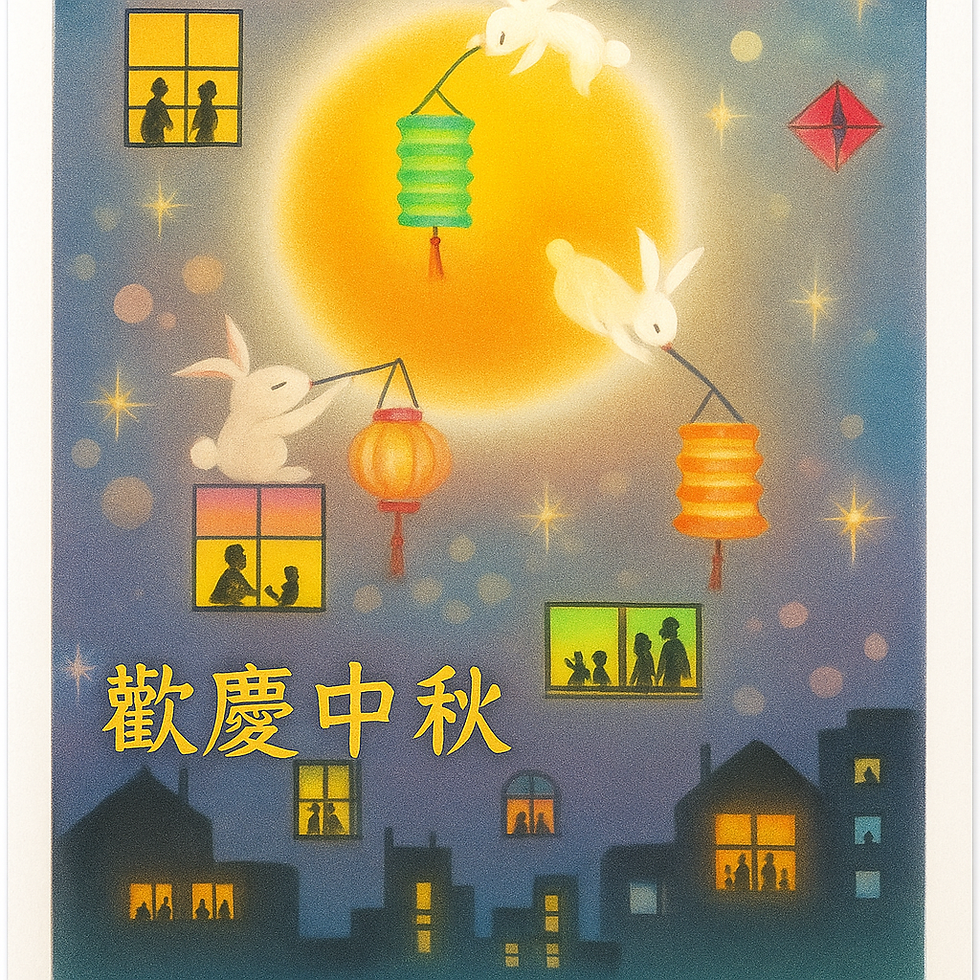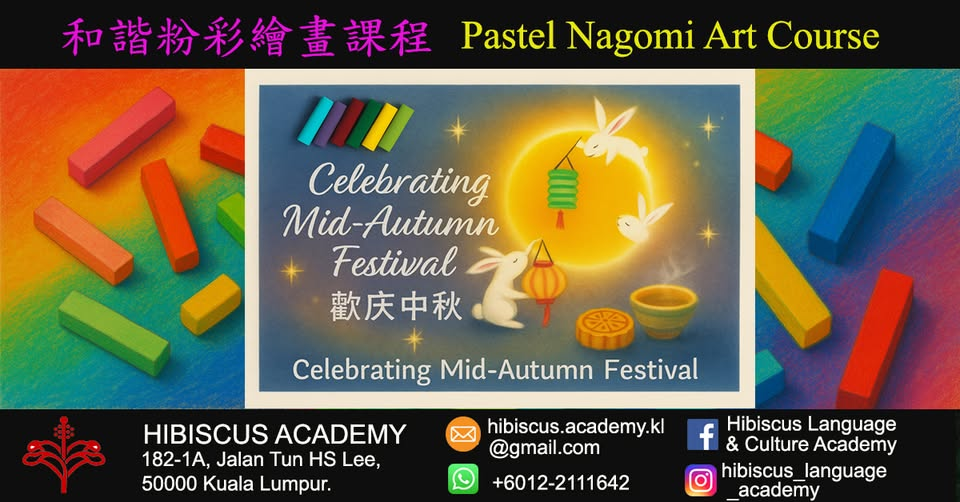Lesser Cold (小寒): Winter Traditions in China, Japan, and Korea | Learn Languages
- vkhong
- Jan 5
- 5 min read
Solar Term: 小寒 (Lesser Cold)

English: Today marks the solar term 小寒 (Lesser Cold), the 23rd of the 24 solar terms in the traditional East Asian lunisolar calendar. It signifies the beginning of the coldest days of the year and holds cultural significance in Chinese, Japanese, and Korean traditions. Let’s explore its historical origins, natural phenomena, and customs across these cultures.
Historical Origin
The solar terms were developed in ancient China over 2,000 years ago during the Han Dynasty to guide agricultural activities. 小寒 indicates a time when temperatures drop further, and winter's grip tightens, making it crucial for ancient farmers to prepare for the extreme cold.
Natural Phenomena
During 小寒, the northern hemisphere experiences frigid weather, with frost and snow being common in many regions. Rivers may freeze, and wildlife enters deep hibernation. This period also marks longer nights and shorter days, symbolizing winter’s peak.
Customs in Chinese Culture
In China, 小寒 is a time to prepare warming foods and tonics to ward off the cold. Traditional dishes like lamb soup and glutinous rice balls are common. Families practice "冬補 (winter supplementation)" to nourish the body, and activities such as making quilts or brewing medicinal wine are prevalent.
Customs in Japanese Culture
In Japan, 小寒 (Shōkan) is associated with observing nature’s stillness. People consume hot soups, like miso soup, and soak in hot springs to stay warm. Seasonal practices include writing New Year’s greetings and making mochi to celebrate the New Year. Farmers monitor the cold to predict the year’s harvest.
Customs in Korean Culture
In Korea, 소한 (Sohan) emphasizes preparing kimchi and other preserved foods to endure the cold months. Traditional homes light up the 온돌 (ondol) heating system, and people drink warm rice wine or teas made with jujube and ginger. Sharing warm meals with family is a cherished custom.
Learn Languages and Explore Cultures with Hibiscus Academy
Chinese Language Course (中文課程)
Immerse yourself in the beauty of Chinese culture and traditions like 小寒 while mastering the language. Join Hibiscus Academy’s engaging classes and discover the richness of Chinese life.📧 Email: hibiscus.academy.kl@gmail.com📱 WhatsApp: +60122111642
Japanese Language Course (日本語コース)Explore Japanese seasonal customs and deepen your understanding of traditions like 小寒. Learn Japanese at Hibiscus Academy with experienced teachers and effective methods.📧 Email: hibiscus.academy.kl@gmail.com📱 WhatsApp: +60122111642
Korean Language Course (한국어 강좌)Uncover Korean seasonal practices and enhance your appreciation of festivals like 소한. Join Hibiscus Academy’s Korean courses and start your language journey today!📧 Email: hibiscus.academy.kl@gmail.com📱 WhatsApp: +60122111642
Chinese:
節氣:小寒
今天是二十四節氣中的第23個節氣——小寒,標誌著一年中最寒冷時期的開始,對中國、日本和韓國文化有著重要意義。以下是小寒的歷史起源、自然現象和風俗習慣。
歷史起源
二十四節氣源於中國漢代,已有兩千多年歷史。小寒表示氣溫進一步下降,是農民為嚴冬做好準備的重要節氣。
自然現象
在小寒期間,北半球氣溫驟降,霜凍和降雪普遍出現。河流可能結冰,野生動物進入冬眠,這段時間象徵冬季的頂峰。
中國文化的習俗
中國人會在小寒期間吃羊肉湯和湯圓等溫暖食物,進行“冬補”,滋養身體。此外,家庭還會製作棉被和釀製藥酒以禦寒。
日本文化的習俗
在日本,小寒(しょうかん)與觀察自然的靜謐有關。人們食用味噌湯,泡溫泉保暖,並進行書寫賀年卡、製作年糕等新年活動。
韓國文化的習俗
在韓國,小寒(소한)強調製作泡菜和其他儲存食品以應對嚴寒。人們使用온돌取暖,飲用紅棗薑茶,家庭聚餐是重要習俗。
學習語言,探索文化——來大紅花學館!
中文課程學習語言的同時深入瞭解像小寒這樣的中國傳統文化!立即加入大紅花學館,開啟文化之旅!📧 電郵: hibiscus.academy.kl@gmail.com📱 WhatsApp: +60122111642
日語課程探索日本的節氣習俗,增進對文化的理解。立即加入大紅花學館的日語課程,輕鬆學習!📧 電郵: hibiscus.academy.kl@gmail.com📱 WhatsApp: +60122111642
韓語課程了解韓國節氣傳統,增強對文化的欣賞。來大紅花學館學習韓語,展開您的語言之旅!📧 電郵: hibiscus.academy.kl@gmail.com📱 WhatsApp: +60122111642
Japanese:
二十四節気: 小寒 (しょうかん)
本日は二十四節気の第23番目、「小寒」に当たります。これは一年で最も寒い時期の始まりを意味し、中国、日本、韓国の文化において重要な位置を占めています。
歴史的起源
二十四節気は中国で2000年以上前に開発され、農業活動の指針として使用されてきました。「小寒」は寒さがさらに強まる時期を指します。
自然現象
この時期、北半球では気温が著しく低下し、霜や雪が一般的です。川が凍りつき、野生動物は冬眠に入ります。
日本の習慣
日本では「小寒」は静かな自然を観察する時期です。味噌汁を食べたり、温泉に浸かったりして暖を取る習慣があります。
文化を学ぶ、言語を磨く——Hibiscus Academyで始めよう!
中国語コース中国の文化と伝統を深く知りながら、中国語をマスターしましょう。Hibiscus Academyのクラスに今すぐ登録!📧 メール: hibiscus.academy.kl@gmail.com📱 WhatsApp: +60122111642
日本語コース日本の伝統を学びながら、日本語を楽しく効果的に習得しましょう。Hibiscus Academyで新しい旅を始めましょう!📧 メール: hibiscus.academy.kl@gmail.com📱 WhatsApp: +60122111642
韓国語コース韓国の季節行事を体験しながら韓国語を学びましょう!Hibiscus Academyの韓国語クラスで新しい一歩を踏み出しましょう。📧 メール: hibiscus.academy.kl@gmail.com📱 WhatsApp: +60122111642
Korean:
절기: 소한 (小寒)
오늘은 24절기 중 23번째인 소한입니다. 이는 1년 중 가장 추운 시기의 시작을 의미하며, 중국, 일본, 한국 문화에서 중요한 의미를 지닙니다.
역사적 기원
24절기는 2000년 이상 전에 중국에서 개발되었으며, 농업 활동의 지침으로 사용되었습니다. 소한은 기온이 더욱 내려가는 시기를 나타냅니다.
자연 현상
이 시기에 북반구는 기온이 급격히 떨어지고 서리와 눈이 자주 나타납니다.
한국의 관습
소한 기간 동안 김치와 저장 음식 준비가 중요합니다. 또한 가족과 함께 따뜻한 밥상을 나누는 것이 전통적인 관습입니다.
언어를 배우고 문화를 발견하세요——Hibiscus Academy에서 시작하세요!
중국어 강좌중국어를 배우면서 소한과 같은 중국 전통 문화를 경험하세요. 지금 Hibiscus Academy에 등록하세요!📧 이메일: hibiscus.academy.kl@gmail.com📱 WhatsApp: +60122111642
일본어 강좌일본의 절기 전통을 배우고 일본어 실력을 향상하세요. Hibiscus Academy와 함께 시작하세요!📧 이메일: hibiscus.academy.kl@gmail.com📱 WhatsApp: +60122111642
한국어 강좌한국의 전통을 배우며 한국어 실력을 키우세요. Hibiscus Academy에서 새 여정을 시작하세요!📧 이메일: hibiscus.academy.kl@gmail.com📱 WhatsApp: +60122111642





Comments